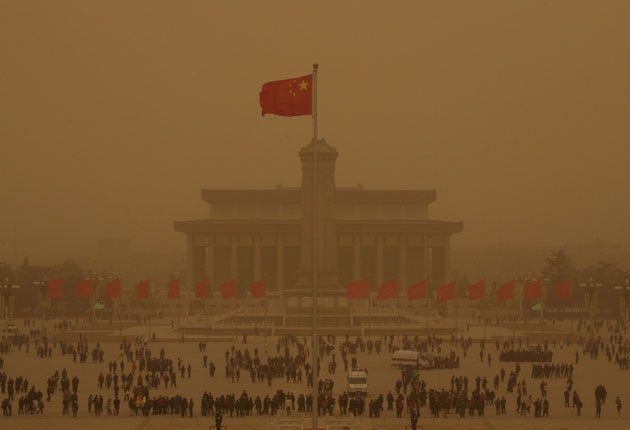Mongolian drought turns Beijing orange

Your support helps us to tell the story
From reproductive rights to climate change to Big Tech, The Independent is on the ground when the story is developing. Whether it's investigating the financials of Elon Musk's pro-Trump PAC or producing our latest documentary, 'The A Word', which shines a light on the American women fighting for reproductive rights, we know how important it is to parse out the facts from the messaging.
At such a critical moment in US history, we need reporters on the ground. Your donation allows us to keep sending journalists to speak to both sides of the story.
The Independent is trusted by Americans across the entire political spectrum. And unlike many other quality news outlets, we choose not to lock Americans out of our reporting and analysis with paywalls. We believe quality journalism should be available to everyone, paid for by those who can afford it.
Your support makes all the difference.Beijing was shrouded in orange dust over the weekend after a sandstorm that has spread over 313,000 square miles blew into the Chinese capital.
The city's weather bureau gave air quality a rare hazardous ranking.
Air quality is "very bad for the health," China's national weather bureau warned. It said people should cover their mouths when outside and keep doors and windows closed.
China's expanding deserts now cover one-third of the country because of overgrazing, deforestation, urban sprawl and drought. The shifting sands have led to a sharp increase in sandstorms — the grit from which can travel as far as the western United States.
The Chinese Academy of Sciences has estimated that the number of sandstorms has jumped six-fold in the past 50 years to two dozen a year.
The latest sandstorm also hit the regions of Xinjiang and Inner Mongolia and the provinces of Shanxi, Shaanxi and Hebei, affecting about 250 million people over an area of 312,000 square miles, the state-run Xinhua News Agency reported.
China's dust storms were at their worst in the 1950s and '60s after campaigns to raise farm and factory output following the 1949 communist revolution stripped the soil of vegetation.
Because of those campaigns, archaeologists have found that sandstorms are reducing some packed-earth sections of the Great Wall in western China to "mounds of dirt" that may disappear in 20 years.
Join our commenting forum
Join thought-provoking conversations, follow other Independent readers and see their replies
Comments